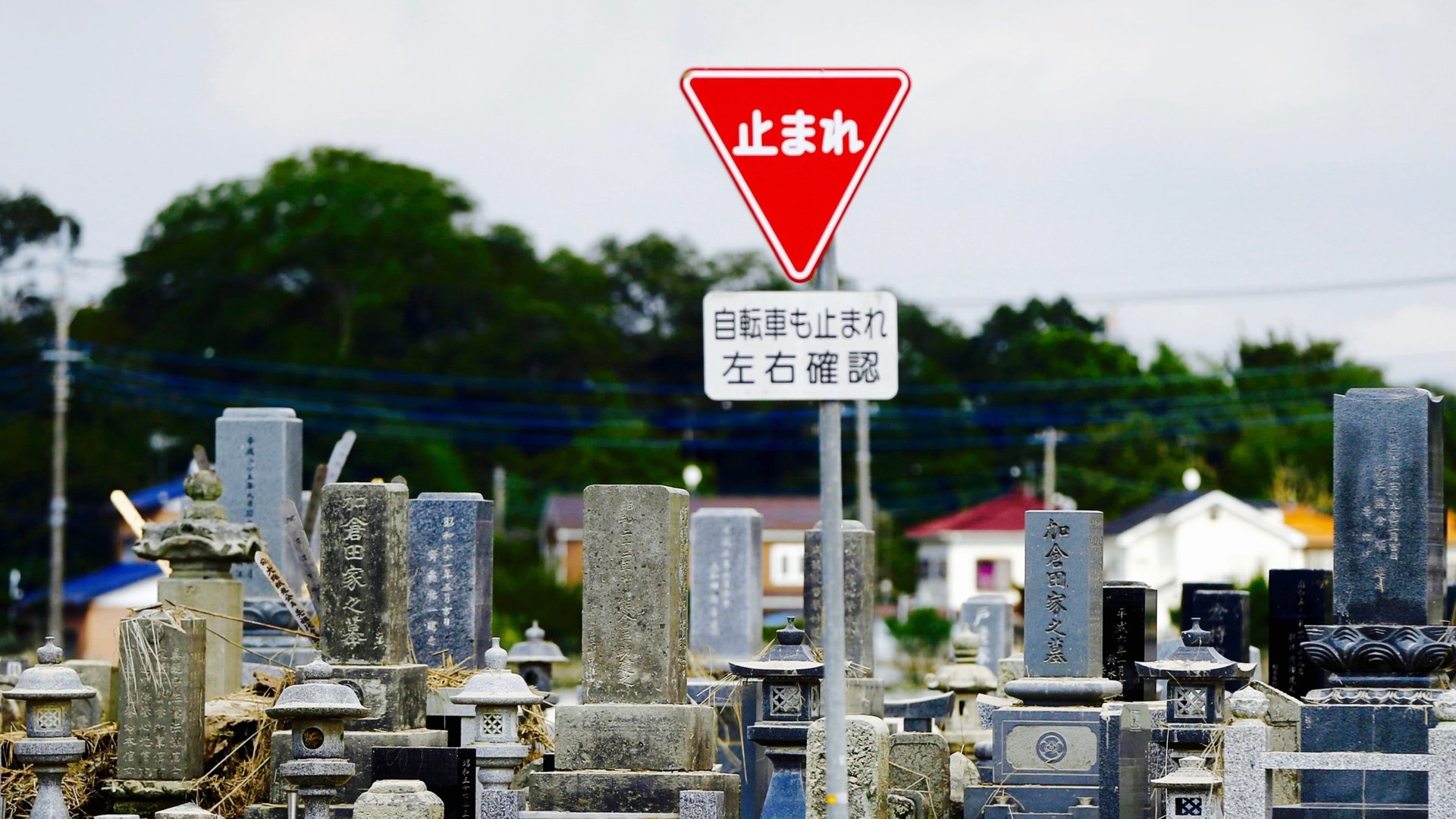Japan debuts its first drive-thru funerals
Japan is a land of lovely traditions. When the cherry blossoms bloom in spring, all pack elaborate picnics, go drinking in parks, and admire the flowers. Same goes for summer firefly-viewing. Given this attention to seasonal occurrences, you can imagine that a person’s death is a big event, involving stacks of bento boxes and drinks to toast the deceased.


Japan is a land of lovely traditions. When the cherry blossoms bloom in spring, all pack elaborate picnics, go drinking in parks, and admire the flowers. Same goes for summer firefly-viewing. Given this attention to seasonal occurrences, you can imagine that a person’s death is a big event, involving stacks of bento boxes and drinks to toast the deceased.
But this week, a new kind of business is debuting in the island nation, and it may well be a sign of the times. Japan’s first drive-thru funeral window opened in Ueda in Nagano prefecture. Mourners can stop their cars next to a window with a receptionist, input information on a device, and hand over their condolence offerings and incense. (Mobile attendance is visible on a screen inside for those who do get out of their vehicles.) The Aishoden funeral home is the first Japanese business to offer such a service, Kyodo News reported on Dec. 16.
There is some precedent. In 2014, the Paradise Funeral Chapel in Saginaw, Michigan (video), made news with a 3-minute drive-thru funeral service. But that’s less surprising in the US, where customs are diverse and drive-thru meals popular. Japan, by contrast, is a small homogenous country. Traditions were once widely shared, and there has long been a general agreement on how to live and die.
Today, Japan is considered “the world’s senior citizen,” as it struggles with an aging population and low marriage and birth rates. There aren’t enough young people in the labor market to sustain the elderly. An abundance of job vacancies have forced the government to recruit housewives and immigrants, and the culture of labor is so prevalent that death by overwork has a name, “karoshi.”
The drive-thru funeral home seems to be more evidence of this changing society. The new Japan may be a place where people only stop to smell the cherry blossoms on the way to a funeral that they’re attending en route to work. Or perhaps, as claimed, the drive-thru option is a valuable one for an elderly nation whose population may not be able to attend funerals but still wishes to pay respects.
It wasn’t always this way. In 2001, a Tokyo metropolitan government survey noted that 85% of about 450 respondents attended Buddhist funerals. These traditionally involve a night vigil, followed by a funeral the next day, where a monk prays and chants sutras at an altar while incense burns. Next, the living picnic with the dead, then the body is cremated and attendees collect bone fragments with special chopsticks, placing them in an urn to be buried in a family grave within 49 days of the funeral.
But back in Ueda this month, visitors seemed pleased by the drive-thru’s combination of convenience and tradition. “It responds to the feelings of people who have given up on participating in funerals,” 30-year-old Kazuhiro Ogura told Kyodo News. “I think the chief mourner would also be happy about the fact that they came.”